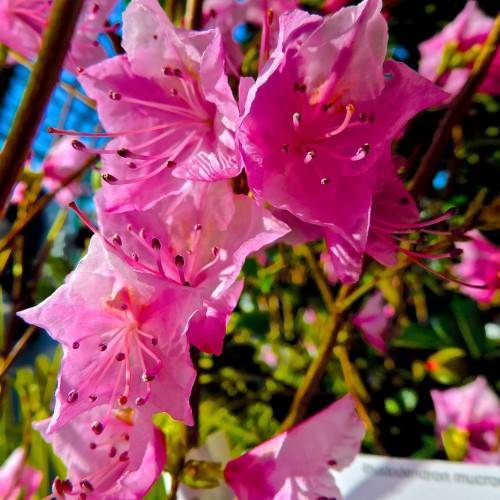
Korean rhododendron
Rhododendron mucronulatum 'Cornell Pink'
Cycle:
Perennial
Watering:
Average
Hardiness Zone:
4 - 7
Flowers:
Flowers In Spring
Sun:
Part shade,full shade
Leaf:
Yes
Growth Rate:
Low
Maintenance:
Moderate
Care Level:
Medium
watering
The Korean rhododendron (Rhododendron mucronulatum 'Cornell Pink') requires a moderate amount of water when mature. This species typically should be watered twice a week. During hot and dry weather, it may be necessary to water more often. For best results, water the plant slowly and deeply and provide 1-2 inches of water each week. Make sure to saturate the soil to a depth of 1-2 feet so that moisture reaches the root system, and be sure not to allow the soil to become soggy or remain overly wet. If your soil contains a high amount of clay, water the plant more often to ensure it does not dry out.
sunlight
Korean rhododendrons (Rhododendron mucronulatum 'Cornell Pink') prefer indirect sunlight throughout the day for a minimum of 4-6 hours, especially when planted in potted containers. Bright and gentle morning light is ideal, and the morning is the best time for the plants to receive the most sunlight before the day warms up and the tree canopy blocks out much of the sunlight from reaching the plant. However, during afternoon hours, Korean rhododendrons should be protected from sunshine and heat to reduce leafburn.
pruning
Korean rhododendrons should be pruned in late spring or early summer, when the shrub is done flowering. Pruning should be kept to a minimum, as pruning can reduce flowering. The shrub should be lightly trimmed each year, removing weak, spindly or dead growth. Pruning should be done in small stages, no more than 1-third of the total length of any branch at any 1 time. All thin, weak or dead stems should be removed. Pruning out the oldest stems from the center of the shrub can help to promote air circulation.
